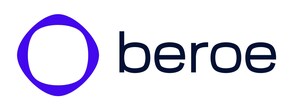RALEIGH, N.C., Sept. 2, 2021 /PRNewswire/ -- The demand for PC components has not undergone much change in the past few years barring the Covid-19, which has pushed them ahead with more people now working remotely.
The demand-supply gap is widening with demand remaining somewhat constant in the face of fluctuating supplies. The downside of the pandemic is that the supplies of computer accessories including panels and monitors, chipsets, processors, and memory cards have been hit to a major extent though not much has changed in the supply of hard drives (HDD & SSDs), cables, and other peripherals. There would be an expected production shortage in the semiconductor industry for the coming 1.5-2 years, thus, causing the PC price trends of end devices such as PCs to increase.
Beroe, which is based in North Carolina, further stated that procurement experts can access this report on its recently launched market intelligence platform Beroe LiVE.Ai: https://www.beroeinc.com/beroe-live-ai/
The PC price analysis reveals how the price impact on PC components can be understood by looking at factors affecting the prices of end-user devices and those charged in providing upgraded services. PC market trends in prices of the components do not reflect much in the prices charged on end-user devices. In most cases, other equipment manufacturers (OEMs) follow certain tactics to inflate the cost that is then passed on to the buyers. For example, some highlight the enhanced performance of the new product or share details of added features in the device when compared with the old ones. Also, they either delay negotiations or continue to stagger on unimportant points while deciding on the final prices for the new product line.
Upgraded services do not attract much price change, though certain changes for each kind of service may depend on its significance. Rather, OEMs prefer to discuss prices after considering all risks including a possible increase in component prices in the future, especially, in long-term contracts. The typical negotiation strategy followed for upgraded services includes preference for a single kind of configuration and lowering of support OEM upgrades.
During negotiation, buyers can gain an upper hand by involving multiple OEMs during the negotiation process, share a predictable requirement or buying plan, ignore options that may not matter in the long run, order in bulk instead of small quantities. Buyers can focus on imminent demand versus future demand, aggregate details of all order items, bring top management members to the negotiation table, and split orders between multiple OEMs instead of letting a single OEM handle all the orders.
The prices of PC components have been falling since 2017 as per the PC industry price outlook. However, in the past 12-24 months, there has been a sudden increase in demand for the components owing to the restricted supply forced by the pandemic. The rationale behind the increased demand for panels and monitors can be explained with display panels and monitors needing chipsets apart from the displays themselves, thus, limiting supplies citing coronavirus scare or unavailability of the materials. The inability of OEM companies to estimate demand forecasts of critical chipsets such as display drivers for all types of panels resulted in an unwarranted demand increase of the products during the pandemic.
Global PC industry trends reveal how prices of other components including speakers, headsets, and external cameras that had remained unchanged hitherto are now gradually increasing due to increased participation in online meetings and video calls during the pandemic. The 'Work from Home' concept has considerably increased the demand for all these products as many organizations have equipped their employees with these accessories.
Key Findings:
- At the negotiation table, buyers have a significant advantage over OEMs that they must exercise.
- A firm buying plan will prompt OEM to commit to discounted pricing.
- Showing indifference to raw material and supply options will enable genuine pricing.
- Buyers must be open to options while negotiating with OEMs.
- Bulk orders to OEMs can help them achieve targets, thus, reducing supply constraints.
The report from Beroe includes:
- PC components price trend and index
- Supply market landscape
- Effect of Covid-19 impact on demand for PC components
- Participation of OEMs in negotiation
- Buyer's negotiation levers
About Beroe
Beroe is the world's leading provider of procurement intelligence and supplier compliance solutions. We provide critical market information and analysis that enables companies to make smart sourcing decisions — leading to lower costs, greater profits, and reduced risk. Beroe has been providing these services for more than 15 years and currently works with more than 10,000 companies worldwide, including 400 of the Fortune 500 companies. For more information about Beroe Inc., please visit https://www.beroeinc.com/.
Contact:
Debobrata Hembram
[email protected]
SOURCE Beroe Inc.

WANT YOUR COMPANY'S NEWS FEATURED ON PRNEWSWIRE.COM?
Newsrooms &
Influencers
Digital Media
Outlets
Journalists
Opted In





Share this article